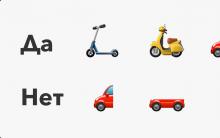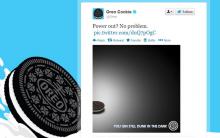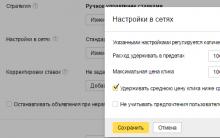In this book, consumer behavior is analyzed using the modern science of decision making. The author talks about why people make purchases, what happens in the mind of the buyer when he makes a decision, and how you can use the latest scientific knowledge in your marketing activities.
Published in Russian for the first time.
Book:
Sections on this page:
Since the value and cost of a product are relative, they are strongly influenced by the specific situational context. When we are thirsty, the relative value of cola will be higher than when we are not thirsty. In general, the value we attribute to products and brands depends on the situation. In psychology, for example, behavior is defined as the interaction of a person with the environment, due to situational and personal factors. On the one hand, we are all individuals with our own preferences, characteristics and needs that form our value system and actions; on the other hand, our behavior is influenced by external factors. For example, our needs differ in hot and cold weather. In marketing, we often only focus on permanent personal factors such as preferences and needs. This trend is due to two reasons. First, the lack of a systematic approach to understanding how the external world, including the situational context, affects perceived value. Secondly, marketers are people too, and they often do not realize how much they depend on environmental factors. Because of this, they underestimate the power of the context, because its effect, like the effect of the framing effect, is implicit. By evaluating customer behavior from a situational (rather than personal) perspective, you are able to make a more accurate prediction. Not surprisingly, situational marketing has become well established by leading companies such as Kraft Foods or Nestl?. Let's look at examples.
In one study, we commissioned the ice cream market. Our client's brand ranked second in the market. The company used standard promotion approaches: brand positioning was carried out according to certain characteristics, and customer behavior was explained by such cognitive schemes as “the first thing that comes to mind”, a list of preferences, a favorite brand, brand loyalty and segmentation by characteristics. In general, marketers were only interested in the customers themselves, not in the selling situation as a whole.
What changed after situational factors were taken into account? Let's take the construct "the first thing that comes to mind". It is usually measured with questions like: “If you are asked to think about ice cream, which brand comes to your mind first, second? ..” To answer, the client begins to remember. Without a specific context in front of them, people use the typical ice cream idea they have learned in life. But we already know that the autopilot processes information about the environment in which we consume products, so associative memory integrates different life events into its systems. For example, recovering drug addicts have a strong desire to take the drug if they just drive past the place where they used to buy it. The situational trigger activates the memory, causing an urgent need through it. Alcoholics often hide alcohol after drinking, and when sober, they cannot remember where. But as soon as they get drunk again, they immediately remember where the bottle is hidden. Some experiments have shown that if you learn new words while standing in water, then it will be easiest to remember them in water.
The context is reflected not only in the perception, but also in the memorization of what we have perceived. In our study, we got different results when we asked, “What brand of ice cream comes to mind when you think of ice cream as a dessert at Christmas?” and when we simply asked which brands came to mind first. By adding situational framing, we got new answers.
The same goes for such constructs as a list of preferences, a favorite brand and loyalty. We have already seen that the effect of inhibition of the cortical focus occurs only for the most beloved brand, and not the second or third in the list of preferences. It’s not enough to just be on the list of brands in question, you need to be number one with a reference to a specific situation. In the ice cream example, the market leader was known to customers and ranked first in the list of brands under consideration. But the number two ice cream brand has firmly established itself in important situational niches such as "ice cream for dessert" and "ice cream to treat yourself." Since it is possible to measure the profit potential in different situations, we used a useful marketing tool for this brand - positioning using different situations. This helped to find niches in the market with b about more sales potential that no other brand has yet taken.
The notion of customer loyalty also appears in a different light. Customers may show high loyalty in certain situations and low loyalty in general. Therefore, for successful brand management, it is important to decide in which situations we want to dominate, that is, which situations, according to your plan, should first of all remind customers of your brand. Brands that rank second and third in the market may benefit from this approach more than trying to overtake the market leader.
A focus on a situational approach can also increase brand penetration. The usual approach to segmentation is to allocate market shares based on preferences, needs, demographics, and customer life cycles. Of course, these factors explain the behavior of buyers of certain categories of products. However, where a product is used for a variety of occasions (as in the case of ice cream) or purchased for other purposes other than expressing the owner's personality (such as essential goods), segmenting based on customer characteristics rather than circumstance limits one's understanding. how purchase decisions are made and lose the ability to influence them. On a walk with children, we make different demands on ice cream than when buying it for ourselves or ordering on a date at a restaurant. This is true for people of any age. In such cases, assigning one type of buyer to one segment is limiting oneself. Customers can be classified into different segments depending on the reason for the purchase.
A situational approach can be useful when entering new markets. A pharmaceutical company wanted to expand its business by selling a new allergy drug. In the treatment of allergies, patients often have to take a long course of injections to blunt the sensitivity of the immune system to allergens. The doctor prescribing such treatment prefers to prescribe drugs from a particular pharmaceutical company. Doctors are well aware of all existing methods of therapy, and the drugs used do not differ in price or quality. Thus, the subjective value of switching to a new drug would be low, and the subjective cost of such a switch would be high, as clinicians would need to change their approaches. With all of this in mind, the company has focused on promoting the main benefit of its drug, the short duration of therapy. Usually this factor does not matter, because the treatment is carried out after the flowering season of plants and patients have nowhere to rush. But there is one exception: many sufferers come to the doctor shortly after the start of allergy season. Usually they are asked to come back in a year, but with a new medication, the doctor can start therapy immediately. Therefore, the marketing department decided to position it as a tool for such situations, which was a huge success. Doctors did not have to revise their usual treatment methods (there are no behavioral costs), but they could help “late” patients and earn more. Thus, doctors, having become better acquainted with the drug and the treatment regimen, began to prescribe it even to those patients who did not need quick treatment.
Analyzing the buying situations rather than the personality types of the buyers can be a direct path to innovation. Take, for example, the Frubes brand of soft cheese (Figure 2.7). Soft cheese is considered a healthy and natural product. In what situations are these characteristics especially significant? For example, when cheese is bought for a school breakfast for a child. Mothers want their kids to have only the healthiest foods in their box for lunch. Soft cheese is a good choice. From a branding point of view, this move has great potential for profit due to the high frequency of the reason for buying, it is hindered only by the need to change habitual behavior. After all, to eat soft cheese from a jar, you need a spoon; besides, if the plastic jar breaks in the briefcase, then everything will be stained with cheese. Frubes manufacturers have solved this problem by packaging the product in soft tubes that are strong enough to eat from. Buyers had previously been positive about soft cheese, but the new context opened up millions of pounds worth of additional sales opportunities.
Rice. 2.7. The success of Frubes cheese is based on a reference to a relevant situation (cheese for school lunches)
The purchase decision is determined by the situational context, which influences the perception of value and cost.
Situational marketing not only helps to tailor the brand to use in specific situations, but also serves as a springboard for decision-making in a number of situations. This means that marketers are faced with the task of figuring out how to subjectively reduce costs and increase the value of the product using context. A good example of this approach is the world leader in rooftop solar panels, SMA. Usually, the company's contact with customers (solar panel installers) occurs when the latter have already agreed with the owners of the house and started purchasing materials. After analyzing the buying process, SMA found a way to increase product value and reduce customer labor. The company's programmers have created the Solarchecker computer program, which craftsmen can use when discussing work with the owner of the house. The installer only needs to put his smartphone on the roof and the program will measure the reflection angles and calculate the expected performance of the panel, and if you enter additional information, the master will immediately tell the owner of the house whether it is cost-effective to buy batteries. When the application calculates the expected performance, the installer can immediately order suitable panels from the company. The application does not improve the quality of the panels themselves, but it increases the overall value of purchasing them from SMA.
2013: Tens of thousands of American football fans are closely watching the final showdown of the season. The stadium is full, because the Super Bowl - the main prize of the NFL USA is at stake! Alas, the long-awaited match is overshadowed by an accident in the power supply system and the Mercedes-Benz Superdome, the largest arena in New Orleans, plunges into darkness. Thanks to this, the very next day, Nabisco's tweet gets on the pages of such eminent publications as Forbes and Mashable. But what does the biscuit manufacturer have to do with it, which was not even among the sponsors of the event?
It's all about a well-worked team of marketers, who managed to quickly create situational content, warmly received by an audience of almost all ages. Let's see what happened. As a result of a spontaneous blackout, more than 70,000 visitors were locked in their seats: it is almost impossible to get to the exit, and few people try to do it, because the Superbowl is one of the most significant sports events in America, and the organizers promised to fix all the problems and continue the game . To pass the time and discuss what happened with friends, the public went to social networks, and just at that moment, an ingenious entry in its simplicity appeared on the official Oreo brand twitter account: “Cut off the light? This is not a problem, because you can chew even in the dark.”

A simple joke was complemented by a laconic design (a cookie on a black background seemed to glow), and the tweet broke the bank, collecting almost 16 thousand reposts and more than 6 thousand likes in the first hours. At the same time, the idea turned out to be absolutely “clean” from the point of view of jurisprudence: the record does not mention a specific incident or third-party trademarks. Thanks to all of the above, this case went down in history under the name Oreo Blackout tweet, rightfully winning the title of canonical example of situational marketing.
This term should be understood as a reaction to an event in a social, political, entertainment or other sphere of life that is relevant to your target audience. Incident-based SMM is not amenable to planning - it is always proactive. Thus, in order to work out a newsbreak, you must have a rapid response team consisting of an account manager, copywriter, designer, videographer and other professionals capable of generating and publishing content in real time (the size and composition of the group depends on the media channels involved in the promotion ).

Discount for readers
You are lucky, the smmbox.com service gives out discounts.
Today 15% discount to use the service. You just need to register and enter the promotional code when paying smmbox_blog
Ideally, creatives should be advised by a lawyer, and even at the stage of brainstorming: otherwise, there is a chance not only to replenish the subscriber base, but also to get a couple of lawsuits against you. Finally, you need to discuss with the client in advance the procedure for approving the materials, because the speed of their placement is no less important than the quality. No matter how wasteful all of the above may seem, in practice, this approach can significantly increase brand awareness, the level of involvement and loyalty of the target audience, and hence the sales volume.
What can form the basis of situational content?
So, we analyzed the term itself and decided what conditions must be met in order for our work to be truly effective. Let's move on to the next question: what kind of informational events are suitable for a particular topic? The answer will be monosyllabic - any. As an example, consider the experience of LEGO, the world famous manufacturer of children's construction sets. Remember the famous viral photo with white and gold and black and blue dresses?

And really, why argue about colors when you can get both options by assembling themed figurines from a set of colorful parts? And in 2016, the company's SMM specialists beat the Oscar ceremony on Twitter, congratulating Leonardo DiCaprio on receiving the coveted statuette.

In addition, LEGO releases themed toy sets on a regular basis, trying to time their announcements to any events. For example, a constructor based on Batman comics, which added a Harley Quinn figurine, was successfully promoted on the eve of the premiere of Suicide Squad.

Of course, situational content of this kind can only be afforded by a large corporation that has enough money to acquire the rights to use images from DC Comics. However, small businesses in some cases can build marketing based on someone else's intellectual property. So, last year, the Internet media and social networks spread the news about the appearance of the Game of Thrones bar in St. Petersburg, the opening of which was successfully timed to coincide with the start of the domestic rental of the 7th season.

The eatery quickly came to the attention of Amediateka, which received exclusive rights not only to broadcast the show in Russia, but also to all related symbols. The case almost went to court, but at the last moment the owner announced the renaming of the institution to “The Game of Swords”, remaining clear before the law. As a result, the number of free press releases on specialized resources increased by 2 (the media did not fail to tell readers that everything ended well), and the VKontakte group grew to 12,000 subscribers. However, not everyone can play on the verge of a foul, and recommending such situational marketing methods to everyone in a row is by no means the best idea. Moreover, there is a much simpler and safer way of PR - parodies.
“Mushrooms” is a very specific project: all their work in itself resembles selected SMM content. Music, words, visuals in the video clips are deliberately viral, and almost every new track turns into a popular meme, but the composition “Ice Melts” broke all records. She was taken away for quotes and repeatedly parodied, but the most noticeable against the general background was the creation of the main composition of the musical “Dance of the Vampires”.
The video for the song “Blood Is Shed Between Us” by the fictional ensemble “Coffins” has collected millions of views on YouTube and provided excellent publicity for the theatrical production.
Taboo: what content is better to refuse?
As in any field, in marketing there is a category of techniques that should be used with extreme caution, or completely forgotten. So, a humorous post that plays up the tragedy that caused the death of people will inevitably cause condemnation in society. However, if you own a chain of restaurants and one of them has a roof fire, but no one was hurt, it’s a sin not to make fun of yourself like Burger King did.

Another slippery topic in social content marketing is politics. Her very
The Aviasales company often uses it, in particular, by parodying the posts of Alexei Navalny.

Such a strategy can only be suitable for those who are well aware of the preferences of their target audience or its complete apoliticality, or are deliberately looking for scandalous fame. Otherwise, the post may lead to a negative reaction, and the discussion in the community will go in the wrong direction. However, in a number of situations, even the news of social and political life can be successfully beaten, the main thing is to be sure that 99% of subscribers will like it. A vivid example is the law on blocking VKontakte and Odnoklassniki in Ukraine. The logic is simple: regulars of social networks cannot like such a solution in principle, so the creative from Ukrposhta can rightly be called a reference.

Also, do not stir up dirty laundry. Aviasales, mentioned above, decided to post a reaction to the divorce of Brad Pitt and Angelina Jolie, tying her to the sale of tours.

A very dubious marketing ploy brought a corresponding harvest, as can be seen from the comments to the post.

Soon the publication was deleted, as it turned out to be much easier than manually raking up the flows of negativity generated by the most scrupulous subscribers and their opponents.
Where to look for informational reasons for creating SMM content?
So, we figured out what to do and what not. It remains to figure out how to quickly receive information about current events. All sources can be divided into 3 categories.
1. Online media
These can be both news portals of a general orientation (RBC, Vedomosti, RIA Novosti), and industry sites like Habr (if we are talking about IT), Vogue (fashion industry) and others. Of course, viewing them manually is inconvenient, because one of the criteria for the success of situational content marketing in social networks is the efficiency of working out the newsbreak, so it makes sense to resort to the services of Yandex.News, as well as RSS readers like Feedly.
2. Trend aggregators
Another very interesting tool that many SEOs use only to check the popularity of keywords (and completely in vain) is Google Trends. Unlike Wordstat, the Google Trends service shows statistics on keywords for the last 24 hours, so it can be quite adapted to search for “hot” topics. The truth is purely global scale, because the system takes into account the interests of users from all over the globe.
If your business is focused mainly on the Western audience, you should pay attention to BuzzSumo.

Formally, you can change the language to Russian, but the quality of the search on the Runet leaves much to be desired, because the platform's algorithms were initially sharpened to analyze the content of Facebook, Google +, Pinterest and LinkedIn, which are not very popular in the post-Soviet space. That is why the service perfectly focuses on the expanses of the foreign Internet, helping to find out what is currently worrying the minds of users from the USA and Europe.
3. Social networks
VKontakte, Facebook and other sites will also serve as a valuable source of information. The same public “Mash” often publishes relevant news before the official media, learning about certain incidents from their eyewitnesses and direct participants. Again, the question arises of how to embrace the immensity, but here SmmBox comes to your aid.

The built-in content search engine will help you find a source of inspiration in one of the default categories. In addition, you can create your own selection of communities that best suits your needs. In turn, an advanced filter will help sort posts by date, popularity, and even content type.

Instead of a conclusion
Situational social media content marketing is one of the most powerful business promotion tools available to any business, regardless of niche or budget. Its only, but very significant, disadvantage can be called unpredictability: you will never be able to assess the virality of the material until the moment it is published and calculate the conversion ahead of time, plus, competitors can get ahead of you, and then all attempts to pull off some of the traffic will be in vain. And given that suitable newsbreaks do not appear every day, this method should be considered solely as an addition to the basic advertising strategy, but this does not mean at all that it can be neglected.
Artur Akhmetov
Head of Social Media Daily Profit
Situational content is one of the key trends in SMM. It consists in monitoring informational occasions and developing creative for social media in real time.
In Russia, situational content has not yet taken root: advertisers do not want to invest in work on the “here and now” principle and are not ready to approve materials on the fly, while advertising agencies are not flexible enough to allocate a team for an emergency task. Therefore, the implementation of situational content falls on the shoulders of ideologues, who believe that a creative on the topic of a relevant informational occasion gives much more likes than classic SMM.
But one should not think that, after reading online publications in the morning, the project manager runs to the designers and briefs them on creating a post. A suitable informational occasion can and should be foreseen.
EVENT
Monitoring future events in the country and the world is the number 1 task in creating situational content. In the digital era, there are many resources from which you can draw information from 9gag.com to www.google.ru/trends/. And do not neglect the astrological calendar - do you still remember the recent red moon?
In our agency, the monitoring of informational events is not automated. Each of the employees of the SMM department, in addition to their usual work, reads a lot of media, some of which are Facebook, VKontakte and other social media feeds. The ability to anticipate a trend is a skill that professional SMM managers develop over time. You can call it intuition.
The Back to the Future trend started in the months leading up to October 21st. By the number of posts in the Western blogosphere, it became clear that big brands would support the newsbreak.
KITCHEN
As soon as we realized that there was an opportunity to integrate SMM activities into the current trend, we contacted our clients and offered them an original idea. 90% of clients refused such a creative. I think that this is often due to the client’s insensitivity to the newsbreak (he thinks that the event will go unnoticed, but when the entire Runet is talking about Back to the Future, it’s too late to draw new posts). But there was a company that believed in situational content - Hasbro. We were given carte blanche to develop creatives for the Play-Doh plasticine brand.
A whole team is always working on the preparation of content: the head of the department, the SMM manager, the designer, the copywriter and the account manager. To make the "dish" tasty, you need to follow the recipe from the creative and follow the instructions of the chef - the leader of the project. But sometimes the SMM kitchen lacks the right ingredients.
CASE
So that the arrival of Marty McFly would not pass without the participation of the Play-Doh brand, the master sculptor became such an ingredient. He created a copy of the DeLorean time machine from plasticine. Without her, Marty would not have made his time travel.











Does Sberbank return tax free
Voloshin Maximilian Alexandrovich
review of the exhibition in the State Tretyakov Gallery
Positive quotes for every day
How to pay for Internet and other Rostelecom services through Sberbank online, terminals and ATMs